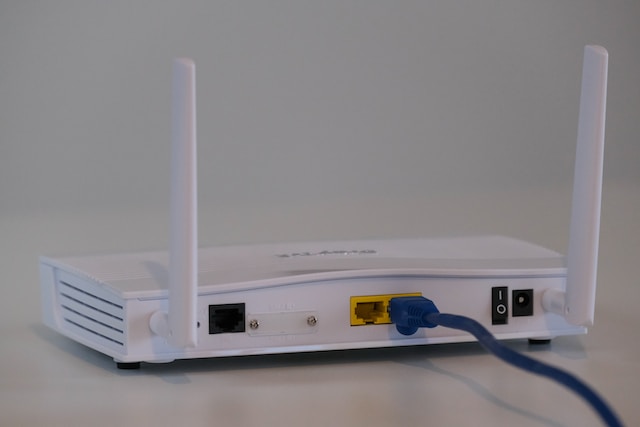Living in a world that’s constantly connected, it’s easy to forget that not everyone has access to reliable internet. In rural America, lack of broadband access is more than just an inconvenience – it can have serious consequences on education and healthcare. Students struggle to keep up with their peers while hospitals and clinics are unable to provide the best care possible. The digital divide between urban and rural areas highlights the inequality that still exists in our society. Join us as we explore how this issue impacts communities across America and what can be done to bridge the gap.
What is Broadband?
Broadband is a type of internet connection that allows for higher speed data transmission. It’s an essential component for most modern communication and entertainment services, including online education and telemedicine. The term “broadband” refers to the wide range of frequencies that can be used to transmit information over a single cable or wireless signal.
Broadband is typically provided by telecommunications companies such as Comcast, AT&T, and Verizon in urban areas where there are more customers per square mile. In rural areas, however, broadband access is often limited due to the lack of infrastructure needed to provide reliable high-speed internet.
While some people may have access to slower forms of internet like dial-up or satellite service, these options often come with severe limitations on data usage and lower speeds that make it difficult (if not impossible) to participate in many online activities smoothly.
Without broadband access, rural communities are at a significant disadvantage compared to their urban counterparts regarding economic opportunities and quality of life.
How Lack of Broadband Access Impacts Education
Lack of broadband access has a profound impact on education in rural America. While urban areas have fast and reliable internet connectivity, students in remote areas face challenges accessing the same resources. Slow or no internet leaves them at a disadvantage compared to their peers who have access to online learning tools.
Students in rural America who lack reliable internet are unable to participate fully in distance learning programs offered by schools and universities. They may miss deadlines for assignments, struggle with research, and even fall behind their classmates due to limited access to information.
Moreover, many students do not have the opportunity to gain digital literacy skills that are required for success beyond high school. Without basic computer skills, it is difficult for these students to apply for jobs or pursue higher education degrees online.
Lack of broadband also affects educators’ ability to provide quality instruction effectively. Teachers need high-speed internet access so they can deliver multimedia content such as videos and interactive lessons without buffering issues.
There is an urgent need for closing the digital divide between urban and rural communities when it comes to education. By providing equal opportunities through reliable broadband infrastructure across all regions of our nation, we can create a level playing field where every student has an equal chance at academic success regardless of geographic location.
How Lack of Broadband Access Impacts Healthcare
The lack of broadband access in rural America also has a significant impact on healthcare. Telemedicine, which involves delivering healthcare services remotely through technology such as video conferencing, requires a reliable and fast internet connection.
Without adequate access to the internet, patients living in remote areas may have difficulty accessing medical consultations and services. This can lead to delayed diagnoses, inadequate treatment plans or even missed appointments.
In addition to telemedicine, electronic health records (EHRs) are becoming increasingly important in the healthcare industry. EHRs allow for more efficient communication between different healthcare providers and better coordination of care for patients.
However, without reliable broadband access, sharing these records between different locations becomes challenging. This can result in delays and miscommunications that could ultimately compromise patient care.
The impact of poor broadband access on rural communities extends beyond just medical care – it can also hinder public health initiatives like disease surveillance and emergency response systems that rely on real-time data transmission.
Addressing the issue of limited broadband accessibility is crucial not only for improving education but also for ensuring equitable access to quality healthcare across rural America.
Solutions to the Problem of Lack of Broadband Access in Rural America
There are several potential solutions to the problem of lack of broadband access in rural America. One approach is to expand infrastructure, such as laying fiber optic cables or building more cell towers, to connect remote areas to the internet. This can be costly and time-consuming, but it has been shown to improve connectivity in some communities.
Another solution is to use satellite technology, which can provide internet access even in very remote areas where other types of infrastructure may not be possible. However, this option can also be expensive and may have limited bandwidth.
In addition, policymakers could work on funding programs that aim at subsidizing costs for providers willing to invest in broadband infrastructure within these low-density population areas. These investments would eventually lead companies nationwide expanding their services across rural America allowing a direct boost towards healthcare and education systems.
Using innovative approaches like TV white space (TVWS) technology could help expand coverage without requiring new physical infrastructure or significant investment by providers. TVWS uses unused frequencies from television broadcasts — known as “white spaces” —to transmit data over long distances with less interference than traditional Wi-Fi signals.
There are multiple options available that could help bridge the digital divide between urban and rural America when it comes down to broadband accessibility problems faced today; however it will take collaboration between public sectors & private industry stakeholders alike if we’re ever going start seeing progress happening at scale!
Conclusion
Lack of broadband access in rural America has far-reaching consequences for education and healthcare. It creates a digital divide that puts these communities at a disadvantage compared to urban areas where high-speed internet is taken for granted. The inability to access online learning resources or telehealth services can lead to lower academic achievement and poorer health outcomes.
However, there are solutions available such as government funding programs aimed at expanding broadband infrastructure in rural areas or partnerships between private companies and community organizations. These efforts can help ensure that everyone regardless of their location has equal access to the necessary tools required for success in today’s world.
It’s time we prioritize bridging this digital divide so that no one is left behind due to lack of internet connection. By doing so, we will not only provide opportunities for better education and healthcare but also create new economic opportunities for these communities by attracting businesses who require reliable high-speed connectivity. Let us work together towards an equitable future where everyone has equal access to the internet irrespective of their location.




